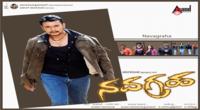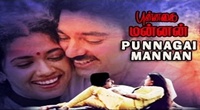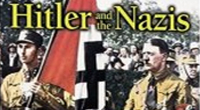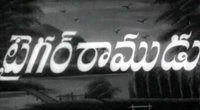This article has multiple issues. Please help improve it or discuss these issues on the talk page. (Learn how and when to remove these template messages)
(Learn how and when to remove this template message)
|




A commando is a soldier or operative of an elite light infantry or special operations force often specializing in amphibious landings, parachuting or abseiling.
Originally "a commando" was a type of combat unit, as opposed to an individual in that unit. In other languages, commando and kommando denote a "command", including the sense of a military or an elite special operations unit.
In the militaries and governments of most countries, commandos are distinctive in that they specialize in assault on unconventional high-value targets. However, the term commando is sometimes used in relation to units carrying out the latter tasks (including some civilian police units). Commandos differ from other types of special forces in that they primarily operate in overt combat, front-line reconnaissance, and raiding, rather than long range reconnaissance and unconventional warfare.
In English, occasionally to distinguish between an individual commando and the unit Commando, the unit is capitalized.
Contents
Etymology
The word stems from the Afrikaans word kommando, which translates roughly to "mobile infantry regiment". This term originally referred to mounted infantry regiments, who fought against the British Army in the first and second Boer Wars.
It is also possible the word was adopted into Afrikaans from interactions with Portuguese colonies. Less likely, it is a High German loan word, which was borrowed from Italian in the 17th century, from the sizable minority of German settlers in the initial European colonization of South Africa.
The officer commanding an Afrikaans kommando is called a kommandant, which is a regimental commander equivalent to a lieutenant-colonel or a colonel.
The Oxford English Dictionary ties the English use of the word meaning " member of a body of picked men ..." directly into its Afrikaans' origins:
1943 Combined Operations (Min. of Information) i. Lt. Lieutenant-Colonel D. W. Clarke... produced the outline of a scheme.... The men for this type of irregular warfare should, he suggested, be formed into units to be known as Commandos.... Nor was the historical parallel far-fetched. After the victories of Roberts and Kitchener had scattered the Boer army, the guerrilla tactics of its individual units (which were styled ‘Commandos’)... prevented decisive victory.... His ideas were accepted; so also, with some hesitation, was the name Commando.
During World War II, newspaper reports of the deeds of "the commandos" led to readers thinking that the singular meant one man rather than one military unit, and this new usage became established.
History
After the Dutch Cape Colony was established in 1652, the word was used to describe bands of militia. The first "Commando Law" was instated by the original Dutch East India Company chartered settlements and similar laws were maintained through the independent Boer Orange Free State and South African Republic. The law compelled Burghers to equip themselves with a horse and a firearm when required in defense. The implementation of these laws was called the "Commando System". A group of mounted militiamen were organized in a unit known as a commando and headed by a Commandant, who was normally elected from inside the unit. Men called up to serve were said to be "on commando". British experience with this system led to the widespread adoption of the word "commandeer" into English in the 1880s.
During the "Great Trek", conflicts with Southern African peoples such as the Xhosa and the Zulu caused the Boers to retain the commando system despite being free of colonial laws. Also, the word became used to describe any armed raid. During this period, the Boers also developed guerrilla techniques for use against numerically superior but less mobile bands of natives such as the Zulu who fought in large, complex formations.
In the First Boer War, Boer commandos were able to use superior marksmanship, fieldcraft, camouflage and mobility to expel an occupying British force (poorly trained in marksmanship, wearing red uniforms and unmounted) from the Transvaal. These tactics were continued throughout the Second Boer War. In the final phase of the war, 75,000 Boers carried out asymmetric warfare against the 450,000-strong British Imperial forces for two years after the British had captured the capital cities of the two Boer republics. During these conflicts the word entered English, retaining its general Afrikaans meaning of a "militia unit" or a "raid". Robert Baden-Powell recognised the importance of fieldcraft and was inspired to form the scouting movement.
In 1941, Lieutenant-Colonel D. W. Clarke of the British Imperial General Staff, suggested the name Commando for specialized raiding units of the British Army Special Service in evocation of the effectiveness and tactics of the Boer commandos. During World War II, American and British publications, confused over the use of the plural "commandos" for that type of British military units, gave rise to the modern common habit of using "a commando" to mean one member of such a unit, or one man engaged on a raiding-type operation.
Green Berets and training origins
Since the 20th century and World War II in particular, commandos have been set apart from other military units by virtue of their extreme training regimes; these are usually associated with the awarding of green berets which originated with British Commandos. The British Commandos were instrumental in founding many other international commando units during World War II. Some international commando units were formed from members who served as part of or alongside British Commandos, such as the Dutch Korps Commandotroepen (who still wear the recognition flash insignia of the British Fairbairn-Sykes Fighting Knife), the Belgian 5th Special Air Service, or Greek Sacred Band (World War II). In 1944 the SAS Brigade was formed from the British 1st and 2nd SAS, the French 3rd and 4th SAS, and the Belgian 5th SAS. The French Army special forces (1er RPIMa) still use the motto Qui Ose Gagne, a translation of the SAS motto "Who Dares Wins."
In addition, many Commonwealth nations were part of the original British Commando units. They developed their own national traditions, including the Australian Special Air Service Regiment, the New Zealand Special Air Service, and the Southern Rhodesian Special Air Service, all of whom share (or used to) the same insignia and motto as their British counterparts. During the Second World War, the British SAS quickly adopted sand-coloured berets, since they were almost entirely based in the North African theatre; they used these rather than green berets to distinguish themselves from other British Commando units. (See History of the Special Air Service). Other Commonwealth commando units were formed after the Second World War directly based on the British Commando units, such as the Australian 1st Commando Regiment (Australia), distinct from the Australian special operations 2nd Commando Regiment (Australia), who originated with the jungle-fighting 2nd Battalion, Royal Australian Regiment during the Second World War.
The US Rangers were founded by Major General Lucian Truscott of the US Army, a liaison officer with the British General Staff. In 1942, he submitted a proposal to General George Marshall that an American unit be set up "along the lines of the British Commandos". The original US Rangers trained at the British Commandos centre at Achnacarry Castle. The US Navy SEALs' original formation, the Observer Group, was also trained and influenced by British Commandos. The US Special Forces originated with the First Special Service Force, formed under British Combined Operations.
Malaysian green beret special forces PASKAL and Grup Gerak Khas (who still wear the Blue Lanyard of the Royal Marines) were originally trained by British Commandos. The Brazilian marine special operations COMANF also originated with Royal Marines mentoring. Other British units, such as the SAS, led to the development of many international special operations units that are now typically referred to as commandos, including the Pakistani Special Services Group, the Indian MARCOS, and the Jordanian special forces.
World War I
Austro-Hungarian assault units
This section does not cite any sources. (February 2018) (Learn how and when to remove this template message) |
During the winter of 1914–1915 large parts of the Eastern Front switched to trench warfare. To cope with the new situation many Austro-Hungarian regiments spontaneously formed infantry squads called Jagdkommandos. These squads were named after the specially trained forces of Russian army formed in 1886 and were used to protect against ambushes, to perform reconnaissance and for low intensity fights in no-man's-land.
Austro-Hungarian High army command (Armeeoberkommando, AOK) realized the need for special forces and decided to draw on German experience. Starting in September–October 1916 about 120 officers and 300 NCOs were trained in the German training area in Beuville (near the village of Doncourt) to be the main cadre of the newly raised Austro-Hungarian army assault battalions. The former Jagdkommandos were incorporated into these battalions.
Italy
The first country to establish commando troops was Italy, in the summer 1917, shortly before Germany.
Italy used specialist trench-raiding teams to break the stalemate of static fighting against Austria-Hungary, in the Alpine battles of World War I. These teams were called "Arditi" (meaning "daring, brave ones"); they were almost always men under 25 in top physical condition and, possibly at first, bachelors (due to fear of very high casualty rates). Actually the Arditi (who were led to the lines just a few hours before the assault, having been familiarised with the terrain via photo-reconnaissance and trained on trench systems re-created ad hoc for them) suffered fewer casualties than regular line infantry and were highly successful in their tasks. Many of them volunteered for extreme-right formations in the turbulent years after the war and (the Fascist Party took pride in this and adopted the style and the mannerism of Arditi), but some people of left-wing political persuasions created the "Arditi del Popolo" (People's Arditi) and for some years held the fascist raids in check, defending Socialist and Communist Party sections, buildings, rallies and meeting places.
World War II
Finland
This section does not cite any sources. (February 2018) (Learn how and when to remove this template message) |
During the Continuation War the Finnish fielded the Erillinen Pataljoona 4. About 150 men were trained before the beginning of the Continuation War. At first the units only had as few as 15 men, but during the war this was increased up to 60 men. On July 1, 1943 the units were organised in the 4th Detached Battalion. In 1944 a special unit with amphibious He 115 planes was founded to support the battalion. The total strength of the battalion was 678 men, and 76 women (see Lotta Svärd).
In the Battle of Ilomantsi, soldiers of the 4th disrupted the supply lines of the Soviet artillery, preventing effective fire support.
The battalion made over 50 missions in 1943 and just under 100 in 1944. The battalion also took part in the Lapland war, and was disbanded November 30, 1944.
Sissiosasto/5.D is another Finnish Commando unit of the World War Two era. The Detachment was founded on August 20, 1941, under the Lynx Division (5th Division, Finnish VI Corps). It was a self-contained unit for reconnaissance patrolling, sabotage and
Watch movie Commando online on Amazon
Watch movie Commando online
Watch The Movie On PrimeJeena Marna Tere Sang Full HD Movie Download

Prem Pratigyaa Full HD Movie Download

Navagraha Full HD Movie Download

Sampoorna Ramayana Full HD Movie Download

Jaise Ko Taisa Full HD Movie Download

Cheppu Full HD Movie Download

Punnagai Mannan Full HD Movie Download

Ghar Full HD Movie Download

Pyar Ke Rahi Full HD Movie Download

Nazrana (1987) Full HD Movie Download
.jpg)
Shikari-The Hunter Full HD Movie Download

Hitler and the Nazis Part 1 Full HD Movie Download

Adbhutam Full HD Movie Download

Chamanthi Full HD Movie Download

Adirindi Gurui Full HD Movie Download

Indrajeet Full HD Movie Download

Inception Full HD Movie Download

Music And Lyrics Full HD Movie Download

Adikkurippu Full HD Movie Download

Tiger Ramadu Full HD Movie Download

Jab Tak Hai Jaan (2012) Full HD Movie Download
.jpg)
Download latest Movie from bollywood
- 1> baaghi 3
- 2> THE SKY IS PINK MOVIE FULL STORY AND REVIEW
- 3> Luka Chuppi
- 4> TO ALL THE BOYS I’VE LOVED BEFORE
- 5> Kabir Singh
- 6> Street Dancer 3D
- 7> Simmba
- 8> Gone Girl
- 9> The Girl Who Lived
- 10> Ludo
- 11> DILWALE DULHANIA LE JAYENGE
- 12> GUILTY
- 13> The Godfather
- 14> Adventures of Rusty
- 15> Sooryavanshi
- 16> Satyameva Jayate 2
- 17> Thappad
- 18> Bhool Bhulaiyaa 2
- 19> KGFChapter 2
- 20> Mardaani 2
- 21> Pinjar
- 22> Shivaji maharaj
- 23> Ek Villian 2
- 24> Hungama 2
- 25> Divergent
- 26> Mumbai Saga
- 27> The Internship
- 28> HIT (telugu)
- 29> Panga
- 30> The perfect date
- 31> 16 December
- 32> Gopala Gopala (Telugu)
- 33> Brahmastra
- 34> Gangubai Kathiawadi
- 35> Manmadhudu
- 36> Nenu local
- 37> Mahanati
- 38> Shatamanam bavathi
- 39> Lagaan
- 40> After
- 41> MOM
- 42> Shamshera
- 43> Raguvaran BTech
- 44> Khakee
- 45> The villain
- 46> OM
- 47> Mr. perfect
- 48> Bueatifull mind
- 49> Hichki
- 50> Gabbar Singh
- 51> Jogi
- 52> Before Sunrise
- 53> Before Sunset
- 54> Before Midnight
- 55> The Big Bull
- 56> Top Gun: Maverick
- 57> The Purge
- 58> The Sky is Pink
- 59> Laxmmi Bomb
- 60> Sadak 2
- 61> Sufna
- 62> Prithviraj
- 63> PK
- 64> Coolie No 1(2020)
- 65> Black Widow
- 66> Dear Zindagi
- 67> Dil Bechara
- 68> PHIR HERA PHERI
- 69> WAR
- 70> Dostana
- 71> RRR: Roudram Ranam Rudhiram
- 72> Maidan
- 73> Dabbang 3
- 74> Chhalaang
- 75> life as we know it
- 76> SherShaah
- 77> Sandeep Aur Pinky Faraar
- 78> Event Horizon
- 79> 83
- 80> Radhe: Your Most Wanted Bhai
- 81> Gunjan Saxena: The Kargil Girl
- 82> Mr India
- 83> Vivah
- 84> Anokha Bandhan
- 85> Ghost
- 86> Bhoot: Part One - The Haunted Ship
- 87> Haseen Dilruba
- 88> Laal Singh Chaddha
- 89> Qismat
- 90> Rajput
- 91> Drive
- 92> Dil Chahta Hai
- 93> Dil Ki Baazi
- 94> Dil Ka Rishta
- 95> Teesri Manzil
- 96> Dil
- 97> Love Aaj Kal
- 98> Khaali Peeli
- 99> Bunty Aur Babli 2
- 100> Atrangi Re
- 101> Gulabo Sitabo
- 102> Jodi
- 103> Suraj Pe Mangal Bhari
- 104> Deewana
- 105> Attack
- 106> Sardar Udham Singh
- 107> Toofan
- 108> THE LOVEBIRDS
- 109> Jersey
- 110> Ginny Weds Sunny
- 111> Thalaivi
- 112> Shiddat
- 113> Angels vs Zombies
- 114> Koi Mil Gya
- 115> Thank God
- 116> Bhuj: The Pride of India
- 117> Hum Aapke Hain Kaun
- 118> The Platform
- 119> Bird Box
- 120> Roohi Afzana
- 121> Torbaaz
- 122> Nikamma
- 123> World War Z
- 124> Extraction
- 125> Train to Busan
- 126> Life of Pi
- 127> SHAADI MEIN JROOR AANA
- 128> Himmat Aur Mehnat
- 129> To All The Boys: P.S. I Still Love You
- 130> Mimi
- 131> Good Newwz
- 132> Shubh Mangal Zyada Saavdhan
- 133> Raabta
- 134> Harry Potter and the Philosopher's Stone
- 135> Harry Potter and the Chamber of Secrets
- 136> Chhapaak
- 137> War of the Worlds
- 138> Harry Potter and the Prisoner of Azkaban
- 139> Harry Potter and the Goblet of Fire
- 140> MURDER MYSTERY
- 141> Shakuntala Devi
- 142> Bachchan Pandey
- 143> Jayeshbhai Jordar
- 144> Sheer Qorma
- 145> Saina
- 146> 'O' Pushpa I hate tears
- 147> Kedarnath
- 148> MS Dhoni The Untold Story
- 149> Chhichhore
- 150> Badhaai Ho
- 151> Unstoppable
- 152> Oz the Great And Powerful
- 153> The Girl on the Train
- 154> Haathi Mere Saathi 2020
- 155> The Conjuring: The Devil Made Me Do It
- 156> Gandhi Se Pehle Gandhi
- 157> The Song of Scorpions
- 158> Srimanthudu
- 159> Hello Guru Prema Kosame
- 160> Beauty and The Beast
- 161> Black Panther
- 162> Charlie and the Chocolate Factory
- 163> Bole Chudiyan
- 164> Fidaa
- 165> Duvvada Jagannadham
- 166> Bruce Lee: The Fighter
- 167> Hyper
- 168> Yaara
- 169> Red (2020)
- 170> Shivam
- 171> That Is Mahalakshmi
- 172> Nishabdham
- 173> Aashram 2020 web series
- 174> Laxmii
- 175> Mismatched
- 176> STUDENT OF THE YEAR 2
- 177> NAIL POLISH
- 178> Ramprasad Ki Tehrvi
- 179> KAAGAZ
- 180> 12 o Clock
- 181> The Power
- 182> bolo hau
- 183> Tribhanga
- 184> JAMUN
- 185> Madam Chief Minister
- 186> Maasaab
- 187> Aadhaar
- 188> Tanhaji
- 189> Bhaagi 3
- 190> Bhootnath
- 191> MALANG
- 192> Jai Mummy Di
- 193> Haathi Mere Saathi 2021
- 194> Shakeela
- 195> Unpaused
- 196> Annayya
- 197> Vamsoddharakudu
- 198> Mrugaraju
- 199> Narasimha Naidu
- 200> Sankranti
- 201> Manasu Maata Vinadhu
- 202> Anjaane
- 203> Apaharan
- 204> Bachke Rehna Re Baba
- 205> Bewafaa
- 206> Roohi
- 207> Radhe
- 208> Zindagi Khoobsoorat Hai
- 209> Yeh Mohabbat Hai
- 210> Yeh Kya Ho Raha Hai?
- 211> The Tomorrow War
- 212> DehradunDiary
- 213> Meri Shaadi Karaoo
- 214> Matruu Ki Bijlee Ka Mandola
- 215> No One Killed Jesica
- 216> Aag Ka Goola
- 217> Eight Million Dollars
- 218> Three Hundred
- 219> Cats and Dog
- 220> Decoy
- 221> Gold Rush
- 222> You Have Got Mail
- 223> Final Destination three
- 224> Tofan
- 225> Jungle
